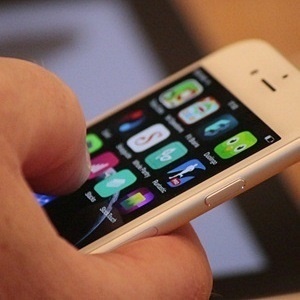
Motown icon Stevie Wonder and other advocates came to the world's biggest gadget fest, the annual Consumer Electronics Show in Las Vegas this week, to convince vendors to consider the needs of the blind.
Wonder told a CES event that his wishlist included a car he could drive - which he acknowledged was probably "a ways away" - and a Sirius XM satellite radio he could operate.
"If you can take those few steps further, you can give us the excitement, the pleasure and the freedom of being a part of it," said the famed musician.
Wonder said some companies had managed to make their products more accessible to the blind, sometimes without even meaning to. He cited an iPod music player and Research in Motion's BlackBerry as gadgets he likes to use.
Advocates argue that if product designers take into account blind needs, they would make electronics that are easier to use for the sighted as well./
The good news is that manufacturers do not need to put large sums of money into making products accessible, nor would they have to forsake innovation, said Chris Danielsen, a spokesman for the US National Federation For The Blind.
"We don't want to hold up technological progress," he said. "What we're saying is, think about the interface and set it up in such a way that it's simple .... The simpler you make the user interface of a product, it's going to reach more people sighted or blind."
Touch screens
With the popularity of touch screens, once simple products such as televisions and stereos have become difficult for blind people to use as they often require navigation of multiple menus that need to be seen to be used effectively.
"That's an increasing problem with new digital devices. It's easy to add feature after feature that's buried under menu after submenu," said Mike Starling, chief technology officer of National Public Radio, which is working on accessible options.
Manufacturers have been putting touch screens in everything from calculators and watches to computers and music players.
Sendero Group President Mike May, who is blind, joked, "Can I ski 60 miles an hour downhill? Yes. Use a flat panel microwave? No." Sendero makes GPS navigational devices that have an audio output for the blind.
There are also screen readers that give an audio reading of a phone's menu. But Anne Taylor, director of access technologies at the National Federation for the Blind, says they do not yet help her to use a touch-screen phone.
She said the ability to use a device without needing to look at it could help sighted people who are driving, or older people whose eyesight is starting to deteriorate.
While blind users can buy screen-reading software for $300 upward, it tends to only work on certain phones, often the most expensive smartphones. In South Africa Vodacom is the only cellular company to offer a range of "speaking phones" preloaded with text-to-speech software for use by the blind or visually impaired.
Taylor is using CES as a forum to present vendors a set of suggestions for product design that she sees benefiting both sighted and blind consumers.
For example, manufacturers could include an easy-to-use start-over button, different sounds for different menus, and controls with good tactile feedback.
Considering consumers
Ahead of the show, there were some signs that vendors, while unlikely to give up on the touch-screen trend, may be more ready to consider consumers with disabilities.
Developers at Google Inc are working on ways to make touch-screen phones, including those based on its own Android mobile software, usable for blind people.
National Public Radio announced a special radio receiver technology and software that would connect a digital radio to a dynamic Braille generating device. It has also created special digital radio channels for readings of the day's newspapers.
Dice Electronics has made a prototype radio that incorporates the NPR technology, and NPR's Starling hopes this will become a commercial product in 2009.
Starling has also set up meetings at CES with other manufacturers in the hope they will include NPR's technology. He said responses to requests for information, which often go unheeded, are much more active this year.
Some manufacturers could use their production facilities to make such devices, as demand weakens for more mainstream products in the economic downturn, he said.
"I think in general there may be a view that accessibility may be becoming the new green," said Starling.
(Reuters Health, January 2009)
Read more:Getting around when you can't see
Reading when you can't see




 Publications
Publications
 Partners
Partners











